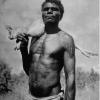Italian denim vs. japanese denim
-
hello 2025!
supertalk is free to browse as a guest. You need to be a member to participate in discussions or buy and sell on the classifieds.
Classifieds listings are now free for members.
supertalk is now upgraded to //// supertalk 8 ////
______________________________________
Current new membership is $US 12 ONE TIME FEE. NO RENEWAL FEE.
______________________________________
You can also become a premium superseller or supermember. Businesses who want to promote their brand and products need to become a supersponsor. superfuture® is privately owned and has been online continuously for 26 years. supertalk has been online for 21 years and is a digital cockroach that will survive all current and future apocalypses.
-
Top 10 Active Viewed Topics
-
- 24434 replies
- 6955056 views
-
- 26785 replies
- 6467337 views
-
- 24770 replies
- 4799657 views
-
- 23132 replies
- 3913167 views
-
- 14075 replies
- 3755696 views
-
- 10651 replies
- 3309098 views
-
- 21294 replies
- 3142757 views
-
- 13320 replies
- 2975923 views
-
- 11654 replies
- 2735135 views
-
- 8534 replies
- 2653687 views
-










Recommended Posts
Join the conversation
You can post now and register later. If you have an account, sign in now to post with your account.